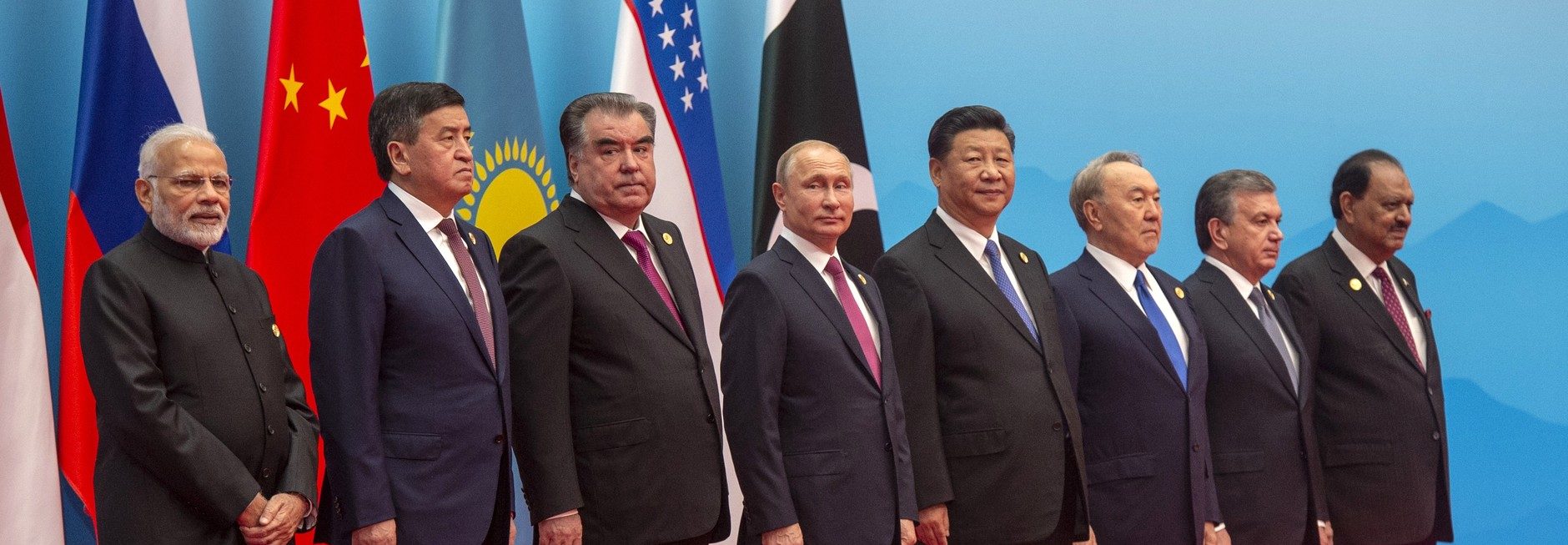A nation must think before it acts.
In late August 2018, China, Russia, and the six other countries of the Shanghai Cooperation Organization (SCO) wrapped up the group’s seventh joint anti-terrorism exercise, called “Peace Mission 2018.” Participating for the first time were troops from India and Pakistan, which became full members in the SCO last year. Leaving aside the questionable realism of the exercise—whose scenario, if in line with those of earlier exercises, involved terrorists armed with tanks and fighter jets bent on a coup—the exercise’s expanded scale would suggest that the SCO had grown more robust.
The reality is probably less rosy. While the SCO has grown bigger, it may not be any stronger. When it was founded in 2001, the SCO’s original members included: China, Russia, Kazakhstan, Kyrgyzstan, Tajikistan, and Uzbekistan. Led by Beijing and Moscow, the Central Asia-focused organization sought to facilitate economic and security collaboration among its members. In the years that followed, the SCO occupied itself with building oil and natural gas pipelines (mainly to China) and working to suppress terrorists and separatists across the region.
Most likely, the SCO also had a wider political aim: to curb American influence in Central Asia. At the time of its creation, the United States was still enjoying its post-Cold War unipolar moment. Naturally, China and Russia gravitated toward each other in response. At their behest, the SCO began to push back against American activities in Central Asia. In 2005, it did so publicly when it called upon Washington to set a timetable for the withdrawal of its military forces from the region. Within months, Uzbekistan ordered American troops out of its Karshi-Khanabad (K2) Air Base. Later efforts by President Barak Obama’s administration to reach out to the SCO were met with smiles but went nowhere. Today, the SCO remains a forum under whose umbrella Beijing and Moscow can find common cause.
However, China and Russia have never truly been friends. They have warily eyed (and occasionally fought) each other for centuries. Though their border dispute was settled in 2003, the divergence in their economic and military fortunes since then has caused friction. As Chinese power and influence have outstripped those of Russia, China has become a challenge to Russia’s traditional dominion over Central Asia and, perhaps one day, Russia’s sovereignty over its Far Eastern province. China’s sway over the SCO can already be seen in the organization’s security preoccupation with terrorists conspiring with separatists, a situation that China particularly fears in its western province of Xinjiang. But greater Chinese influence invariably makes Moscow nervous. Hence, even as Russia hopes to economically benefit from China and partner with it to counter the United States, Russia has also sought to manage China’s rise.
The SCO has given Russia a way to do so. Russia has tried to use the SCO’s framework to delimit China’s interactions with Central Asia. Russia has also tried to expand the SCO’s membership to dilute China’s burgeoning power. For years, Moscow lobbied the SCO to admit its long-time friend, India—Asia’s second-most populous country and one that not only has a long-standing territorial dispute with China, but also one that views it with deep suspicion. Little wonder that China dragged its feet on India’s full membership. (It was also no surprise that India, after becoming a full member, moved to block China from obtaining the SCO’s unanimous support for its famed Belt and Road Initiative (BRI).[1])
Another way Russia has sought to leverage the SCO has been to use it to magnify Russian power. Broadly, Russia has attempted to put itself at the center of international bodies that span Eurasia. In 2015, Moscow brought three of them together at one time in the Russian city of Ufa: the annual SCO meeting, the annual BRICS summit, and an informal meeting of the Eurasian Economic Union (EAEU), a Russia-dominated economic union of former Soviet republics. At the SCO meeting, Russia revealed its true colors. Rather than push ahead with a Chinese proposal to create a SCO free trade area, which would likely have expanded not only trade, but also China’s footprint across Central Asia, Russia demurred and argued that it needed time to reach a consensus within the EAEU first.
Unfortunately for Russia, by the mid-2010s, China no longer felt the need to pursue its objectives in Central Asia through the SCO. Whereas China had once been conscious not to irritate Russia in the region, China has become comfortable working with Central Asian countries bilaterally. At the same time, China launched new efforts like the Asian Infrastructure Investment Bank and the BRI that have enabled it to engage with Central Asia in multilateral fora outside of the SCO.
Indeed, one could see the declining importance that China attaches to the SCO in Beijing’s decision to admit India as a full member. Nevertheless, that alone is not enough to undermine the SCO so long as China and Russia find utility in it. But the internal rivalry between the two countries is likely to limit the scope of the organization’s collaboration. And so, apart from keeping American influence in Central Asia at bay, the purview of the SCO may be increasingly confined to concerns involving heavily armed, coup-plotting terrorists.
[1] Formerly called the One Belt, One Road Initiative and, before that, the Silk Road Economic Belt and the 21st-Century Maritime Silk Road



